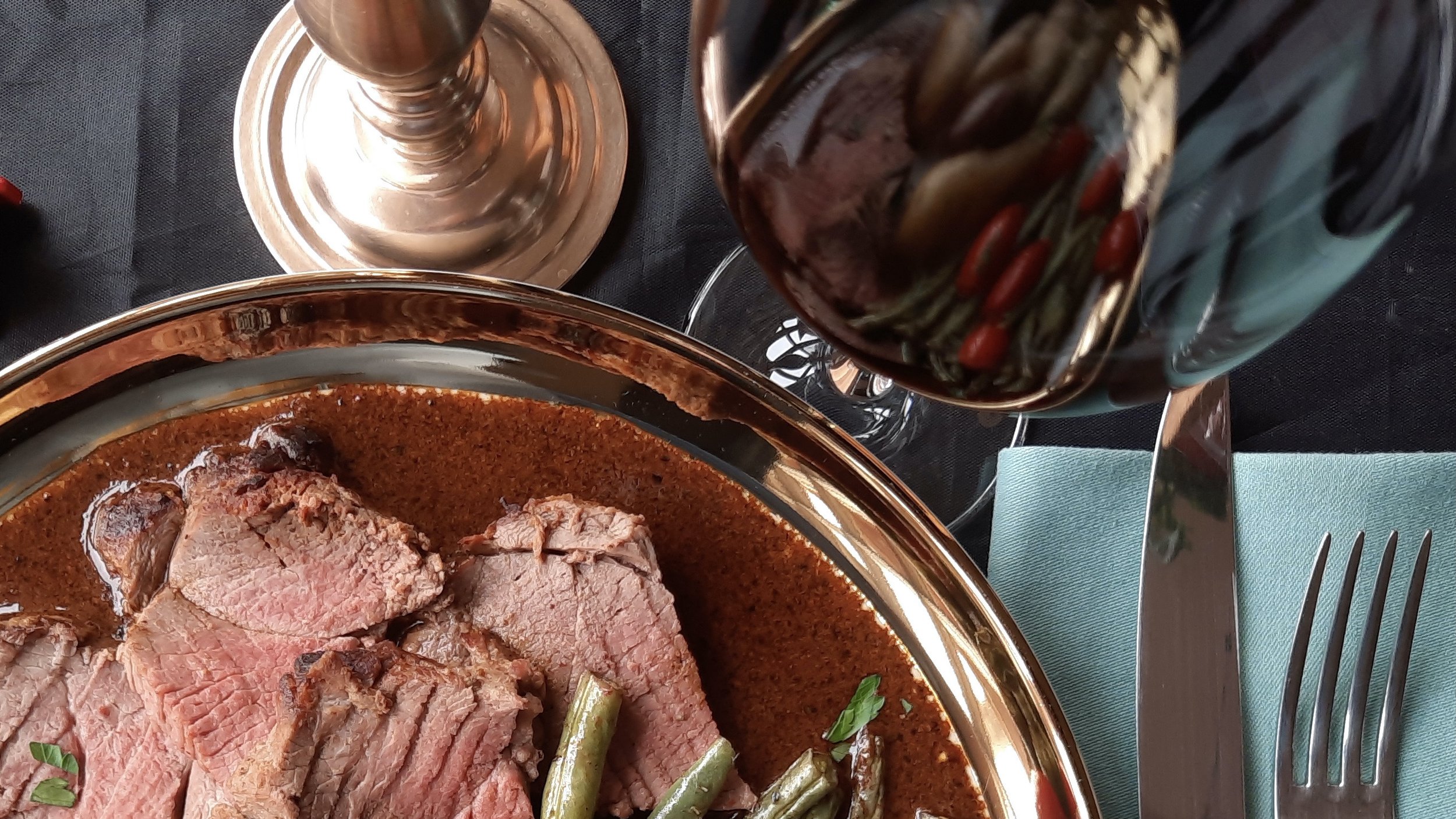WINES FOR PASSOVER AND EASTER
From religion’s point of view, this is wine drinking’s annual high water mark. Easter isn’t Easter without its dinner of lamb or ham and their wines; Passover isn’t Pesach without the mandated four cups of wine during the Seder and then more to wash down the brisket. Here’s betting that even non-denominational Easter Bunny fans reach for the corkscrew after the egg hunt.
With open arms, the truly ecumenical may attempt to recommend one wine to accompany all these foods, perhaps including hard-boiled eggs.
I will be not ecumenical, but sectarian, taking both Easter and Passover in turn and recommending a few wines to best pair with their traditional foods.
Easter lamb begs for the tannins of a red wine.
Easter lamb
This Easter meat, with its history as a food of spring when lambs were birthed or given the naming of Jesus as the Lamb of God, meets its wine apex in red wine graced with a good amount of tannin, such as a Cabernet Sauvignon-based Bordeaux. In days gone by, the best Cabernet came from Bordeaux and was shipped from there by Englishmen, longtime lovers of roast lamb
Or—why not? of course—a Greek red made of the “Saint George” (Agiorgitiko) grape, in keeping with Jesus’ Greek name Ἀμνὸς τοῦ Θεοῦ (in Latin, Agnus Dei or "Lamb of God"). Agiorgitiko’s dark berry fruit is accented with notes of brown spice and sports noticeable but gentle tannins and a cleansing, zippy, edgy finish.
What lamb wants in a wine is sufficient tannin to scour away its fat and a certified redness. It is the duty of an Easter lamb’s wine to be red.
Easter ham
Whence cured pork for Easter? Well, the great and beneficent hog has always been a Christian meat, given its ubiquity in the Latin world where all parts of it were consumed but for the oink. That it was commonly slaughtered in the fall, its fresh meat eaten throughout the winter, and its salted, dried and cured portions ready in the springtime, may explain the timing.
American-style ham is indeed salty and that (and consequent high umami) is its bugaboo with wine. Such foods can skew the taste of especially red wine toward the dull, flat, astringent and bitter. Best to select drier white or pink wines (matching the color of the meat is a nice fillip), that are high in countervailing acidity.
When I used to visit Burgundy, many meals began with starters of “jambon persillé” (ham in parsley aspic) paired with a Premier Cru Chablis. Its great acidity is terrifically cleansing.
Salty ham is on the lookout for crisp, refreshing light reds and dry rosés.
Passover brisket
What does a St. John know from a Jewish brisket? Well, that it is often cooked to tenderness but also can be as dry as the Sinai (“Place in a slow oven at the beginning of the Haggadah and then forget about it”), and that its sauce is often honey-sweet.
Sweet foods aren’t sweet on wine, unless the wine is as sweet and that’s for dessert only. Plus, the days of sweet concord grape wine with Passover dinner are long over thank you very much.
If the brisket’s sauce isn’t too sugared, what you’ll need is a rich, softly turned-out red wine that doesn’t need much fat to play against and that acts as its own luxurious and moistening “sauce” for the meat.
Each year brings us better and better kosher wines, from many countries and especially from Israel. The Israelis have isolated those regions or sites that produce terrific wine grapes, perhaps the promising being the Golan and Galilee overall. If you want gefilte fish with Manischewitz, fine, but you need not go there ever again.

